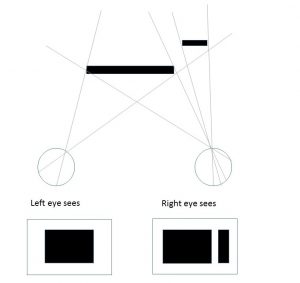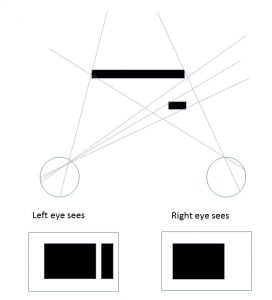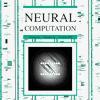I have just been asked for “a succinct explanation of da Vinci stereopsis”. I googled in the hope of finding one, but couldn’t, so thought I’d put one up here.
Leonardo da Vinci didn’t quite realise that stereoscopic depth perception was a thing, but he did explain in his “Treatise on Painting” that a given object occludes different parts of the background when viewed from the left eye as compared to the right eye. “Da Vinci Stereopsis” now refers to depth perception based on the occlusion geometry in the two eyes. The term was introduced by Nakayama and Shimojo in a 1990 paper.
Consider the left-hand figure below. Both eyes see a large black rectangular object, but the right eye also sees a black bar to its right. Most observers, seeing these images, experience a weak sense that the bar is further away than the rectangle. This is because of the geometry shown in the figure. The left eye doesn’t see the bar because it’s hidden from view (“occluded”) by the nearer black rectangle.

Conversely, in the right-hand figure, the bar is only visible in the left eye, again to the right of the rectangle. Now, most people will report a weak sense that the bar is closer than the rectangle. This is because these retinal images could be accounted for by the scene shown at the top of the figure: the bar is technical seen by both eyes, but in the right eye it appears on top of the rectangle. Both objects are black and so the bar is invisible in the right eye.

Many vision scientists think that da Vinci stereopsis is a separate form of stereo vision that is not based on disparity (the separation between the images of the same object as seen in left and right eye). The argument is that because the bar is only visible in one eye’s image, a disparity cannot be defined.


















